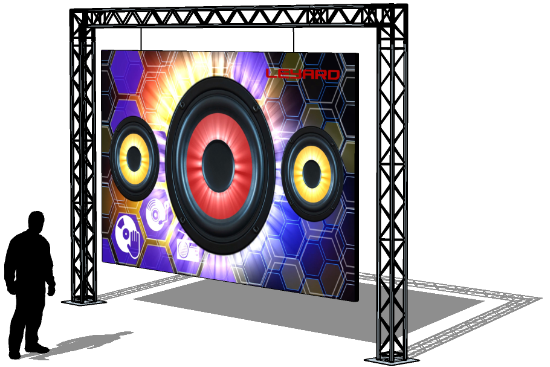Exploring How Definition Influences the Performance and Aesthetic Quality of Light Emitting Diode Walls in Modern Exhibition Technology
Exploring How Definition Influences the Performance and Aesthetic Quality of Light Emitting Diode Walls in Modern Exhibition Technology
Blog Article
Light Emitting Diode walls are growing increasingly popular in different environments, from musical events and sports events to business displays and art installations. One of the most crucial factors that influence the functionality and image clarity of these displays is resolution. Resolution refers to the number of picture elements that make up the visual on the display. Higher resolution means additional pixels, which can result in sharper and clear visuals. Grasping how image clarity affects LED walls can help users make knowledgeable decisions about their display needs.
When talking about image clarity, it is crucial to take into account pixel pitch, which is the distance between the center of one pixel to the midpoint of the following pixel. A smaller pixel pitch results in a higher image clarity, allowing for additional clarity in the images shown. For instance, an LED screen with a picture pitch of 1.5mm will offer a clearer image than one with a pixel pitch of 3mm. This is particularly important in environments where viewers are near to the display, such as in a small location or a exhibition event booth. In these cases, a greater resolution can significantly enhance the observing experience.
Another factor of image clarity is its effect on hue accuracy and brightness. LED walls with higher resolutions often have superior hue rendering, indicating that the hues displayed are increasingly vibrant and true to life. This is crucial for uses like advertising, where the goal is to attract interest and convey a message effectively. Additionally, higher led screen color calibration tools resolution displays can preserve luminosity levels even when seen from various perspectives. This is important in large locations where viewers may be seated at various distances and positions from the display.
The performance of LED screens is also affected by resolution in terms of refresh rates and reaction durations. A greater image clarity display can handle faster refresh frequencies, which is crucial for fast-moving material such as films and animations. This indicates that the visuals on the display will appear smoother and more fluid, enhancing the overall viewing experience. In comparison, reduced resolution displays may have difficulty with fast-moving content, resulting in blurriness or lag. Therefore, for events that rely on high-energy visuals, choosing a display with a appropriate resolution is critical.
In conclusion, image clarity plays a vital role in determining the functionality and visual quality of LED walls. Elements such as picture spacing, hue precision, luminosity, refresh frequencies, and reaction times all affect how effectively a display can convey information and engage viewers. As advancements continues to progress, grasping these factors will assist operators select the right LED wall for their particular needs, ensuring that they achieve the best potential outcomes in their displays and occasions.